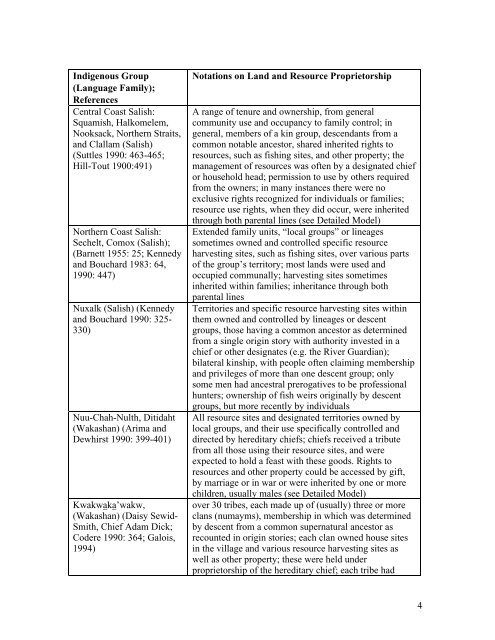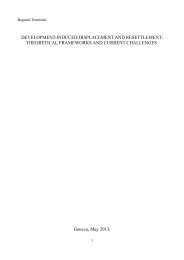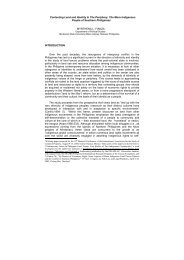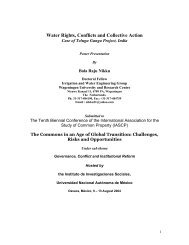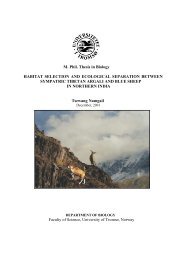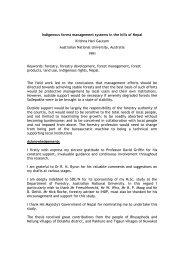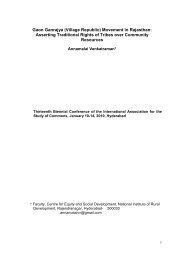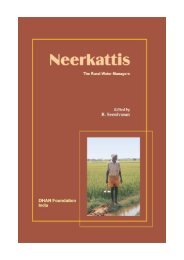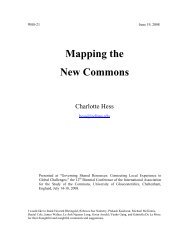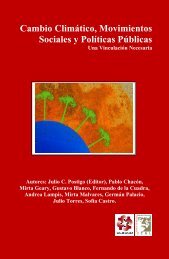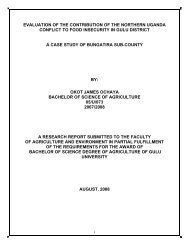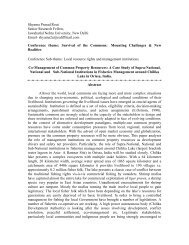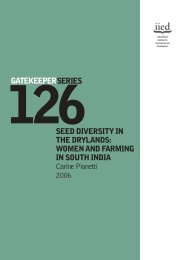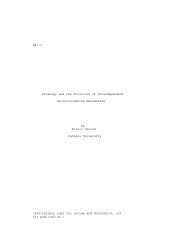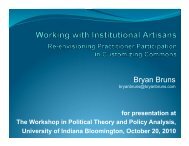Occupying the Land - Digital Library Of The Commons
Occupying the Land - Digital Library Of The Commons
Occupying the Land - Digital Library Of The Commons
You also want an ePaper? Increase the reach of your titles
YUMPU automatically turns print PDFs into web optimized ePapers that Google loves.
Indigenous Group(Language Family);ReferencesCentral Coast Salish:Squamish, Halkomelem,Nooksack, Nor<strong>the</strong>rn Straits,and Clallam (Salish)(Suttles 1990: 463-465;Hill-Tout 1900:491)Nor<strong>the</strong>rn Coast Salish:Sechelt, Comox (Salish);(Barnett 1955: 25; Kennedyand Bouchard 1983: 64,1990: 447)Nuxalk (Salish) (Kennedyand Bouchard 1990: 325-330)Nuu-Chah-Nulth, Ditidaht(Wakashan) (Arima andDewhirst 1990: 399-401)Kwakwaka’wakw,(Wakashan) (Daisy Sewid-Smith, Chief Adam Dick;Codere 1990: 364; Galois,1994)Notations on <strong>Land</strong> and Resource ProprietorshipA range of tenure and ownership, from generalcommunity use and occupancy to family control; ingeneral, members of a kin group, descendants from acommon notable ancestor, shared inherited rights toresources, such as fishing sites, and o<strong>the</strong>r property; <strong>the</strong>management of resources was often by a designated chiefor household head; permission to use by o<strong>the</strong>rs requiredfrom <strong>the</strong> owners; in many instances <strong>the</strong>re were noexclusive rights recognized for individuals or families;resource use rights, when <strong>the</strong>y did occur, were inheritedthrough both parental lines (see Detailed Model)Extended family units, “local groups” or lineagessometimes owned and controlled specific resourceharvesting sites, such as fishing sites, over various partsof <strong>the</strong> group’s territory; most lands were used andoccupied communally; harvesting sites sometimesinherited within families; inheritance through bothparental linesTerritories and specific resource harvesting sites within<strong>the</strong>m owned and controlled by lineages or descentgroups, those having a common ancestor as determinedfrom a single origin story with authority invested in achief or o<strong>the</strong>r designates (e.g. <strong>the</strong> River Guardian);bilateral kinship, with people often claiming membershipand privileges of more than one descent group; onlysome men had ancestral prerogatives to be professionalhunters; ownership of fish weirs originally by descentgroups, but more recently by individualsAll resource sites and designated territories owned bylocal groups, and <strong>the</strong>ir use specifically controlled anddirected by hereditary chiefs; chiefs received a tributefrom all those using <strong>the</strong>ir resource sites, and wereexpected to hold a feast with <strong>the</strong>se goods. Rights toresources and o<strong>the</strong>r property could be accessed by gift,by marriage or in war or were inherited by one or morechildren, usually males (see Detailed Model)over 30 tribes, each made up of (usually) three or moreclans (numayms), membership in which was determinedby descent from a common supernatural ancestor asrecounted in origin stories; each clan owned house sitesin <strong>the</strong> village and various resource harvesting sites aswell as o<strong>the</strong>r property; <strong>the</strong>se were held underproprietorship of <strong>the</strong> hereditary chief; each tribe had4


